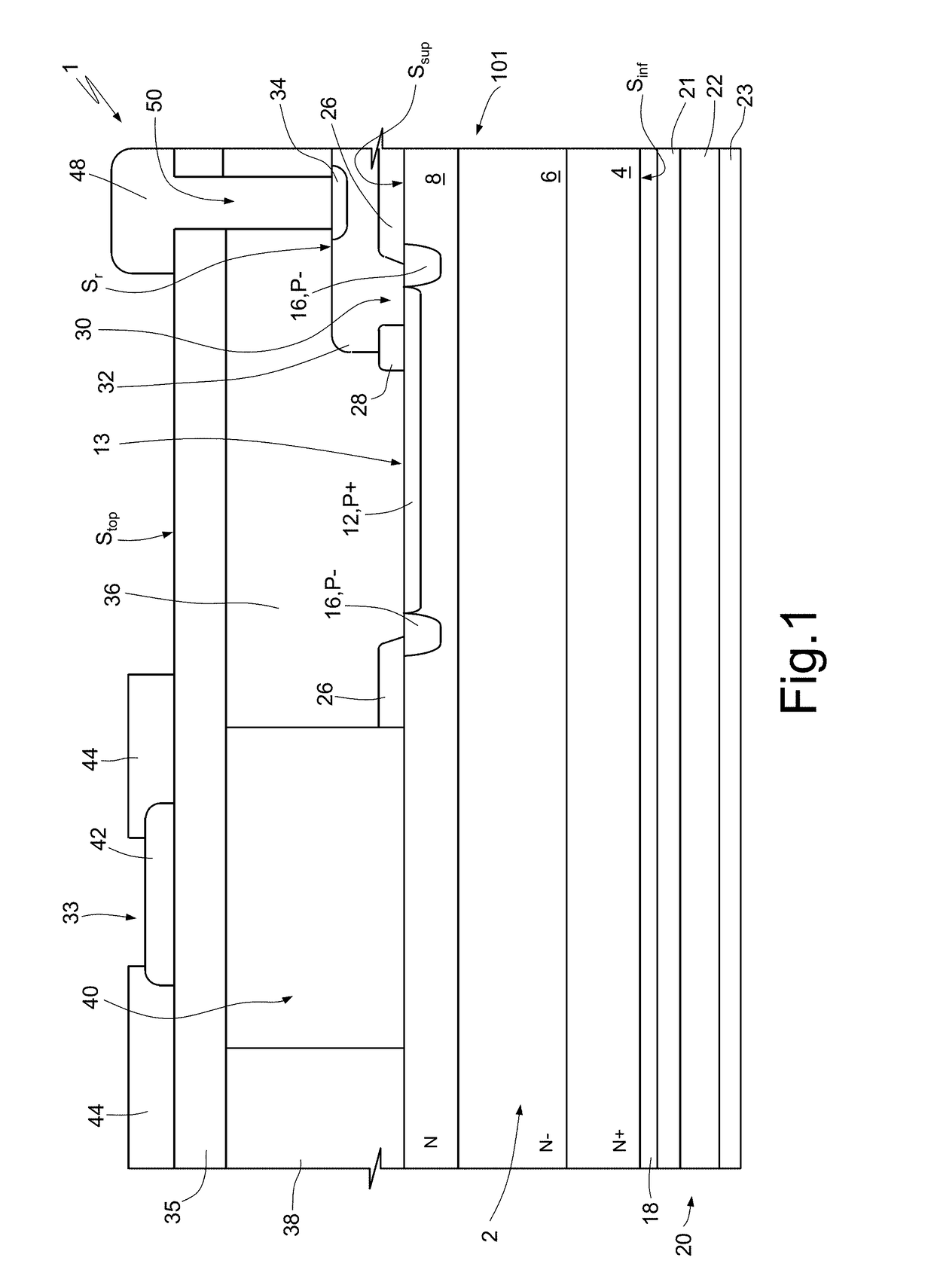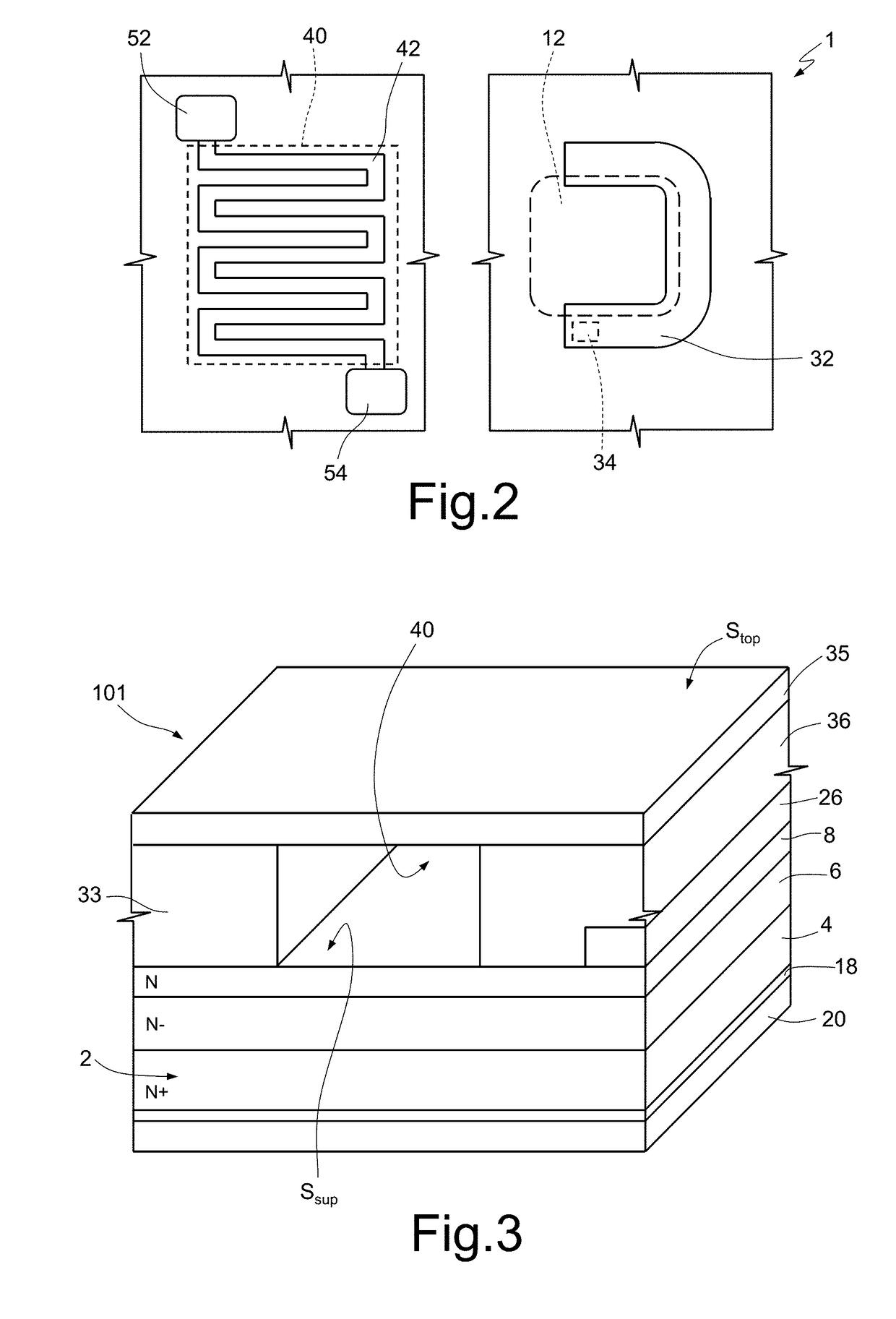Semiconductor device for detecting ultraviolet and infrared radiation and related manufacturing process
a semiconductor and infrared radiation technology, applied in the direction of optical radiation measurement, instruments, lighting and heating apparatus, etc., can solve the problems of generating false alarms, high cost of gas photomultiplier tubes, and large overall dimensions,
- Summary
- Abstract
- Description
- Claims
- Application Information
AI Technical Summary
Benefits of technology
Problems solved by technology
Method used
Image
Examples
Embodiment Construction
[0027]FIG. 1 shows an example of embodiment of a semiconductor device 1, which is integrated in a first die 101. FIG. 1 and the subsequent figures are not in scale.
[0028]In detail, the semiconductor device 1 comprises a semiconductor body 2, for example of silicon carbide. In particular, the semiconductor body 2 may be made of silicon carbide of a 4H polytype (4H—SiC).
[0029]The semiconductor body 2 includes a substrate 4 of an N+ type, which is delimited at the bottom by a bottom surface Sinf, and has a thickness, for example, of 350 μm; moreover, the substrate 4 is doped, for example, with nitrogen and has a doping level of, for example, 1·1019 cm−3. Without any loss of generality, in what follows it is assumed, wherever not expressly indicated, that the doping of an N type is obtained using nitrogen as dopant.
[0030]The semiconductor body 2 further comprises a first epitaxial layer 6 and a second epitaxial layer 8.
[0031]The first epitaxial layer 6 is arranged on the substrate 4, is...
PUM
 Login to View More
Login to View More Abstract
Description
Claims
Application Information
 Login to View More
Login to View More - R&D
- Intellectual Property
- Life Sciences
- Materials
- Tech Scout
- Unparalleled Data Quality
- Higher Quality Content
- 60% Fewer Hallucinations
Browse by: Latest US Patents, China's latest patents, Technical Efficacy Thesaurus, Application Domain, Technology Topic, Popular Technical Reports.
© 2025 PatSnap. All rights reserved.Legal|Privacy policy|Modern Slavery Act Transparency Statement|Sitemap|About US| Contact US: help@patsnap.com



